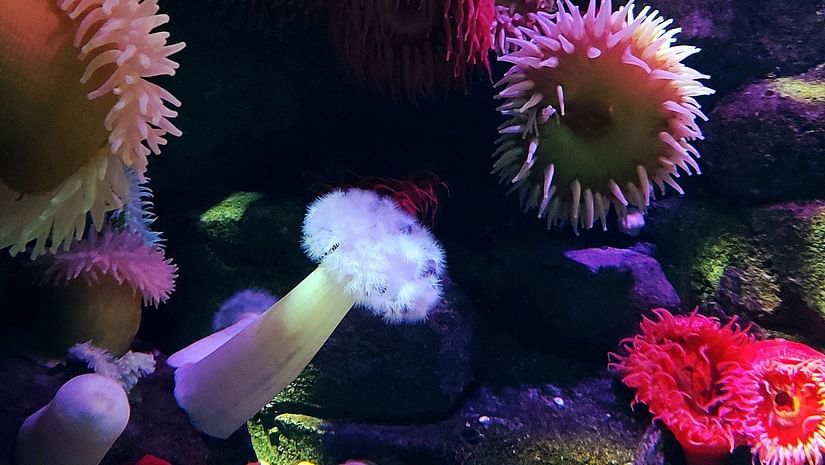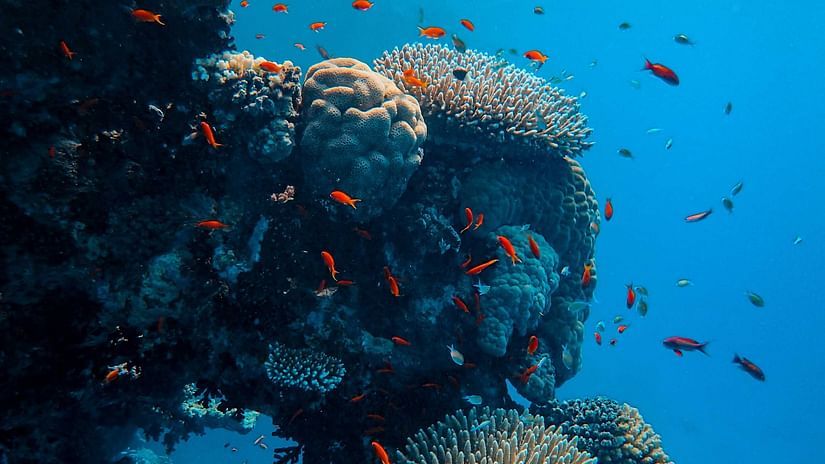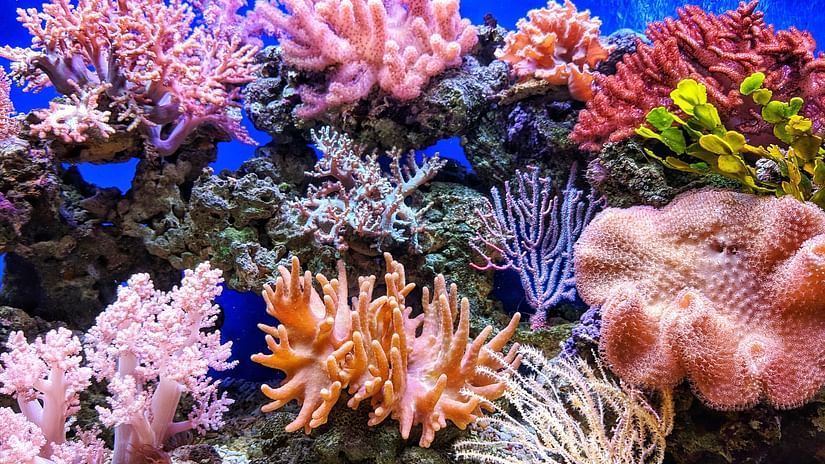- The Perfect Andaman and Nicobar Resort
- Corbyn’s Cove Beach
- Light and Sound Show Port Blair
- Port Blair to Havelock Distance
- Ross Island Port Blair Through the Seasons
- Sea Walk Havelock: An Unforgettable Underwater Adventure
- Sunrise in Neil Island
- Scuba Diving, Port Blair
- Glass Bottom Boat Ride, Havelock
- Andaman Islands Travel Guide
- Beach Front Hotel in Andaman
- Jaipur to Andaman & Nicobar Flight
- Best & Most Beautiful Islands to Visit in India
- History of Andaman & Nicobar Islands
- Festivals in Andaman and Nicobar Islands
- Visakhapatnam to Andaman Travel Guide
- Best Stays for MICE Travellers in Andaman
- Andaman Trip from Kolkata
- Hyderabad to Andaman
- Chennai to Neil Island
- Bird Watching in Andaman
- Havelock Island Sightseeing
- Laxmanpur Beach, Neil Island
- Snorkelling in Havelock Island
- Bioluminescence in Havelock Island
- Port Blair Trip Plan
- Neil Island Itinerary
- Shopping in Andaman
- Kalapathar Beach in Havelock
- Andaman Game Fishing
- Iramnagar Beach Neil Island
- Hyderabad to Andaman Tour Packages
- Shopping in Port Blair
- Tourist Places in Andaman and Nicobar Islands
- New Year Party in Andaman and Nicobar
- Island Tourism Festival of Andaman
- Trip to Andaman from Bangalore
- Port Blair to Neil Island
- Trip to Andaman in January
- Delhi to Andaman
- Andaman and Nicobar Islands Nightlife
- Night Life in Port Blair
- Andaman Nicobar Trip in December
- Andaman and Nicobar Islands Vacation
- Family Trip to Andaman
- Places of Interest in Port Blair
- Best Places to Stay in Andaman
- Aberdeen Bazaar
- Bharatpur Beach
- Things to do in Port Blair
- Andaman Cuisine
- Mount Harriet National Park
- Photography spots in Andaman
- Neil Island vs Havelock Island
- Elephant Beach
- Trip to Andaman in June
- Tourist Places in Port Blair
- Surfing in Havelock Island
- Best Time to Visit Port Blair
- Water Sports in Neil Island
- Kayaking in Havelock Island
- Water Activities in Port Blair
- Scuba Diving in Neil Island
- Top 5 Beaches in Port Blair
- Offbeat Things To Do in Havelock
- Parasailing in Port Blair
- Howrah Bridge, Neil Island
- Chidiya Tapu Port Blair
- Water Activities in Andaman
- Fishing in Andaman
- How to Reach Andaman and Nicobar
- Adventure Sports in Andaman
- Port Blair Sightseeing Places
- Exploring the Barren Island Volcano: A Journey from Port Blair
- Best Places for Sunset and Sunrise in Havelock
- Dolphin Watching in Andaman
- Offbeat Places in Andaman
- Things to Keep in Mind While Traveling to Andaman
- Turtle Nesting in Andaman
- Choosing the Best Time to Visit Andaman
- Hidden Gems of Andaman
- Elephant Beach, Havelock Island
- Things to Do in Port Blair at Night
- Unveiling the Charm of Havelock Island at Night
- Visiting Andaman in September
- Best Time to Visit Havelock Island
- Glass Bottom Boat Ride in Andaman
- Trekking on Havelock Island
- Andaman's Best Sunsets: Where to go for Breathtaking Views
- Exploring Andaman in Monsoon
- A Perfect Andaman Itinerary for Families
- Travelling from Port Blair to Havelock
- Island Hopping in Andaman
- Luxury Travel in Andaman
- Exploring Havelock’s Mangrove Creek
- Must Visit Waterfalls in Andaman
- Celebrate This Holi in Andaman
- Cruises to Andaman
- Street Food in Port Blair
- Sea Walking in Andaman
- Visit Andaman for Your Valentine’s Weekend Getaway
- How Havelock Became Swaraj Dweep
- 4-day Itinerary for Republic Day Weekend
- Festivals in Andaman & Nicobar Islands
- Places to Visit in South Andaman
- Planning an Adventurous Honeymoon
- Beach Wedding Destinations
- Trekking in Andaman
- Best Beaches on Neil Island
- The Best Place to Stay in Andaman
- The Best Beaches in Port Blair
- Places To Visit In Port Blair
- The Best Beaches on Havelock Island
- Summer in the Andamans
- Historic Sites to Visit in Andaman
- An Andaman Itinerary for 6 Days During Summer
- The Corals of Andaman and Nicobar Islands
- Solo Trip to Andaman and Nicobar
- The Tribes of Andaman & Nicobar Islands
- Must-visit Beaches in Andaman
- Wildlife in Andaman and Nicobar Islands
- Places to Visit in Neil Island
- Experience the best of Havelock Island
- A Fairytale Honeymoon in Havelock Island
- Chidiya Tapu-Munda Pahar Trek
- Best Places in Andaman for Couples
- A Honeymoon Trip to Andaman
- Best Restaurants and Bars in Andaman
- Best Scuba Diving Spots in Andaman
- A Helpful Guide for Travelling In Andaman
- Best Things to Buy in Andaman for Your Loved Ones
- Plan an Andaman Itinerary for 7 Days
- Best Places to Visit near Port Blair
- Best Places to Celebrate New Year in India
- Indulge in a Unique New Year Celebration in Andaman
- Travel Tips for Andaman - the Dos and Don’ts
- From City Buzz To Island Bliss
Coral reefs are a dazzling sight. They are home to about a quarter of all marine life like fishes, crustaceans and other species. The variety of this habitat may be staggering, but the true attraction is the stunning colours that mesmerise all who have seen it. The secret to this astonishing spectrum of colours is in the corals themselves. These tiny creatures use minerals from the seawater to develop hard exoskeletons, made of calcium carbonate. These skeletons slowly build up over millions of years, resulting in the massive underwater structures we see today.
Microscopic algae, called zooxanthellae, dwell in the tissues of the coral polyps and provide nourishing nutrients. In return, the polyps shelter the algae from the harsh elements of the sea, feeding carbon dioxide to the algae, which is necessary for photosynthesis. The polyps do not photosynthesise, but depend on the algae to provide this nourishment. The green and brown colours on reefs are a direct result of the photosynthesis administered by zooxanthellae, while the brighter colours like red and blue are proffered by coloured proteins produced by the coral animals. Coral bleaching occurs when the reef loses a majority of its algae, resulting in 'bleaching'. It loses its colour and turns dull brown or white.
Microscopic algae, called zooxanthellae, dwell in the tissues of the coral polyps and provide nourishing nutrients. In return, the polyps shelter the algae from the harsh elements of the sea, feeding carbon dioxide to the algae, which is necessary for photosynthesis. The polyps do not photosynthesise, but depend on the algae to provide this nourishment. The green and brown colours on reefs are a direct result of the photosynthesis administered by zooxanthellae, while the brighter colours like red and blue are proffered by coloured proteins produced by the coral animals. Coral bleaching occurs when the reef loses a majority of its algae, resulting in 'bleaching'. It loses its colour and turns dull brown or white.


Depending on where they are in their life cycle, coral reefs can be divided into three - fringing reefs, barrier reefs and atolls. The coral reefs in Andaman and Nicobar Islands are of two kinds - barrier reefs on the western side of the archipelago and fringing reefs along the east coast.
The corals in Andaman extend over 11,000 sq. km., while those in Nicobar are spread out over 2,500 sq. km. Precursive scientific tests have suggested that these may be the most biologically diverse and the best-preserved reefs in India. It is a spectacle that every visitor of the island must make time to witness.
The corals in Andaman extend over 11,000 sq. km., while those in Nicobar are spread out over 2,500 sq. km. Precursive scientific tests have suggested that these may be the most biologically diverse and the best-preserved reefs in India. It is a spectacle that every visitor of the island must make time to witness.

Neglect and ignorance have led to the degradation of these natural wonders. However, with proper education and discourse, we can help get these lustrous beings to their glorious best. We invite you to pay them a visit and learn all you can about how to help preserve them while you're here.
Andaman and Nicobar Islands have many wondrous sights that will leave you enthralled. The endless seas, silky sands and awe-inspiring landscape make these islands a much-revered destination for couples, especially honeymooners. Come stay at Symphony Summer Sand, Symphony Palms or Symphony Samudra to enjoy the vacation of a lifetime. We also encourage you to spread the word and do what you can to help conserve the mesmerizing corals of Andaman and Nicobar islands.
Andaman and Nicobar Islands have many wondrous sights that will leave you enthralled. The endless seas, silky sands and awe-inspiring landscape make these islands a much-revered destination for couples, especially honeymooners. Come stay at Symphony Summer Sand, Symphony Palms or Symphony Samudra to enjoy the vacation of a lifetime. We also encourage you to spread the word and do what you can to help conserve the mesmerizing corals of Andaman and Nicobar islands.